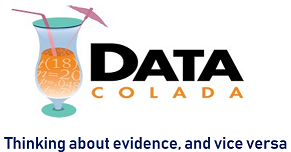This is the third post in a series (.htm) in which we argue/show that meta-analytic means are often meaningless, because they often (1) include invalid tests of the hypothesis of interest to the meta-analyst and (2) combine incommensurate results. The meta-analysis we discuss here explores how dishonesty differs across four different experimental paradigms (e.g., coin…
Author: Joe Leif Uri
[105] Meaningless Means #1: The Average Effect
of Nudging Is d = .43
This post is the second in a series (see its introduction: htm) arguing that meta-analytic means are often meaningless, because (1) they include results from invalid tests of the research question of interest to the meta-analyst, and (2) they average across fundamentally incommensurable results. In this post we focus primarily on problem (2), though problem…
[68] Pilot-Dropping Backfires (So Daryl Bem Probably Did Not Do It)
Uli Schimmack recently identified an interesting pattern in the data from Daryl Bem’s infamous “Feeling the Future” JPSP paper, in which he reported evidence for the existence of extrasensory perception (ESP; htm)[1]. In each study, the effect size is larger among participants who completed the study earlier (blogpost: .htm). Uli referred to this as the "decline…
[67] P-curve Handles Heterogeneity Just Fine
A few years ago, we developed p-curve (see p-curve.com), a statistical tool that identifies whether or not a set of statistically significant findings contains evidential value, or whether those results are solely attributable to the selective reporting of studies or analyses. It also estimates the true average power of a set of significant findings [1]….
[66] Outliers: Evaluating A New P-Curve Of Power Poses
In a forthcoming Psych Science paper, Cuddy, Schultz, & Fosse, hereafter referred to as CSF, p-curved 55 power-posing studies (.pdf | SSRN), concluding that they contain evidential value [1]. Thirty-four of those studies were previously selected and described as “all published tests” (p. 657) by Carney, Cuddy, & Yap (2015; .htm). Joe and Uri p-curved…
[64] How To Properly Preregister A Study
P-hacking, the selective reporting of statistically significant analyses, continues to threaten the integrity of our discipline. P-hacking is inevitable whenever (1) a researcher hopes to find evidence for a particular result, (2) there is ambiguity about how exactly to analyze the data, and (3) the researcher does not perfectly plan out his/her analysis in advance….
